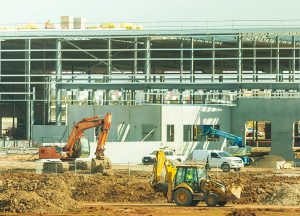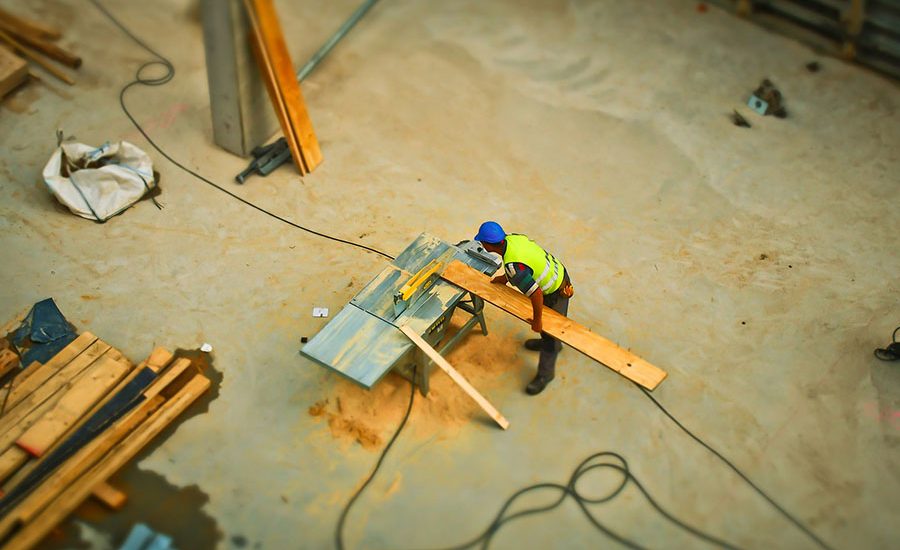The COVID-19 restrictions have affected many industries, but the construction sector is one that is of growing concern for many advisers. While demand for building works remains strong – with many building projects under way – is the industry a ticking time bomb for its creditors and other stakeholders?
After the initial contraction, which occurred while governments and businesses grappled with the impact on trade caused by the pandemic, demand in the construction industry has rebounded strongly. (Although it’s yet to see what the effect of the most recent two-week construction industry shutdown in Victoria will have on this strength.) The rebound is largely due to government support for business and households through the various stimulus packages, such as JobKeeper, cash-flow boosts and the HomeBuilder grants program. The stimulus and support packages saw many stalled projects reinstated, a rise in the number of renovations and refurbishment of business and personal premises, and a spike in new residential developments.
Boom set to end
However, a recent report by the Housing Industry Association found the current construction boom will likely end by the middle of 2022 and that the almost 33 per cent rise in building projects since 2019 is unsustainable. The report stated that these projections follow warnings from builders’ associations that the current rate of activity was masking shortages that were destroying any potential profits.
HIA chief economist Tim Reardon says: “the home-building sector has pulled the economy out of the recession” but this new pace will not become the norm.
The pandemic has been a big contributor to the issues the sector is facing and current orders and restrictions can be found here for NSW and Victoria. The issues the sector is facing were apparent even before COVID, as evidenced by its share of The Australian Tax Office’s debt attributed to SMEs, which was $21.4 billion at FY20.
Jirsch Sutherland Partner Andrew Spring notes that one-third of the reported SME ATO debt at FY20 is housed in the construction industry. “The construction industry has traditionally accounted for a disproportionately high level of insolvency appointments,” Spring says. “Our fear is that these potentially terminal businesses may ‘infect’ their directors, owners, employees and stakeholders if action is not taken to address the financial imbalance.”
Unfortunately, when it comes to the issue of non-payment, construction’s large-scale problems are very much prevalent. Thousands of subcontractors have been forced into insolvency due to the “domino effect” of bad debt down the line when building and construction companies fail to pay. The fear is that the current climate is only exacerbating this.
Challenges facing the construction industry
 There is a number of specific challenges facing the construction sector. Spring says inflation is a key one following the rise in prices of raw materials due to a lack of supply. “Couple this with labour shortages as a result of the lockdowns on the East Coast and many projects are likely going to overrun,” he says. “This situation may trigger contractual defaults at all levels of the process adding pain to already squeezed bottom lines and working capital reserves.”
There is a number of specific challenges facing the construction sector. Spring says inflation is a key one following the rise in prices of raw materials due to a lack of supply. “Couple this with labour shortages as a result of the lockdowns on the East Coast and many projects are likely going to overrun,” he says. “This situation may trigger contractual defaults at all levels of the process adding pain to already squeezed bottom lines and working capital reserves.”
Building costs across all Australian markets are certainly growing faster than inflation as construction demand outstrips supply for both labour and materials. Global supply chain issues are largely to blame. However, a recent report from consultancy Macromonitor’s Australian Construction Cost Trends 2021 highlights that a stable dollar, recovering supply chains and downturn in domestic building will reduce construction inflation from 8 per cent to around 2 per cent by the end of next year – although this will vary by sector.
A slowdown in domestic house-building as the federal government’s HomeBuilder incentive scheme ends will also drive the fall in inflation. The scheme saw little new demand due to the state border closures and lack of population growth. New home sales fell by 20.5 per cent in July as lockdowns restricted trade and eroded confidence. Despite this, builders are likely to be dealing with rising costs for the short to medium term, which may affect their ability to survive.
Taking early action
Signs that a construction company is struggling may not always be apparent. Some warning signs to look out for include:
- any slowdown or delays in projects or deadlines that have lapsed
- delays in payments to subcontractors or others in the supply chain
- subcontractors refusing to go on-site
These signs indicate a company is struggling with its cash flow and Spring says it’s important for accountants and advisers to recognise the warning signs and take early action. “The construction industry accounts for a significant proportion of the ATO’s tax debt,” he says. “Accountants and advisers to businesses in this industry likely only need look to their own clients’ ATO lodgement and payment history to identify distress in their clients’ business. The ATO has taken a compassionate approach to its collection efforts during the last 18 months, but this is also something that is likely to change shortly.”
In circumstances where accrued liabilities, such as tax debt, are becoming apparent on a client’s balance sheet, further questions around project profitability and pipeline forecasts are the next investigative step. Spring says: “Often we see companies in this industry fall behind due to one or two projects that overrun on costs and/or timing, with the losses eroding all working capital and creating a scenario where the proverbial ‘Peter is robbed to pay Paul’.”
Options to protect from financial distress
In an environment of multiple and potentially diversified projects, spotting these signs can be difficult. “Monitoring project performance from tender to hand-over is essential in a time where many factors that are outside of a business’ control can impact a project’s financial success,” Spring says. “Identifying a potential problem early expands the options available for the business, ensuring that any financial contagion does not spread further than necessary. Options such as Safe Harbour, the Small Business Restructuring Process and Voluntary Administration are business rescue programs designed to protect companies and the people behind the companies in the event of financial distress.”


